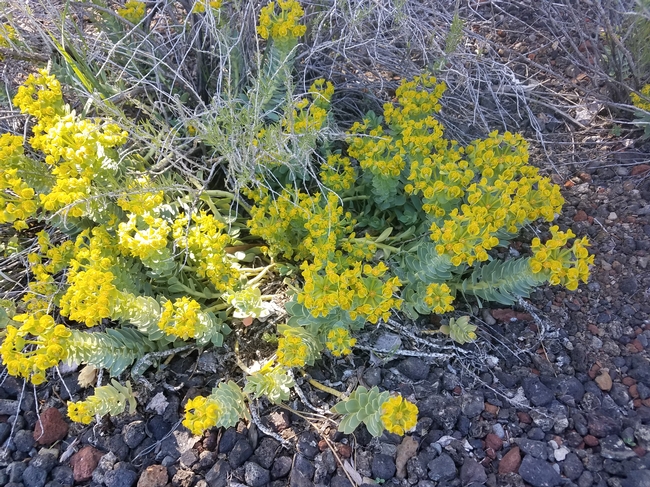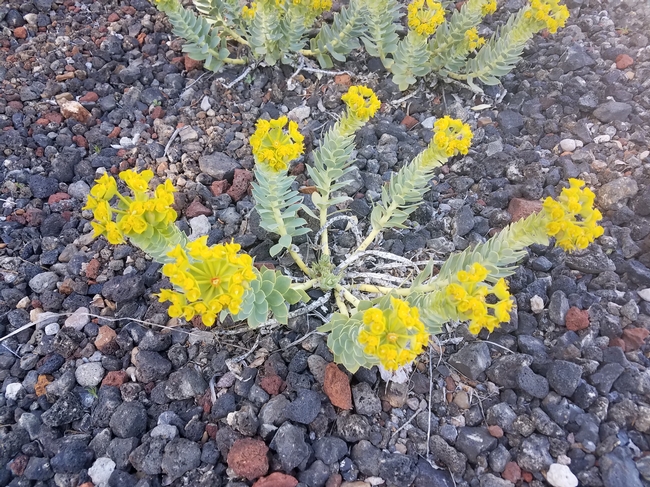When I was an undergraduate back in Colorado, I spent the vast majority of two summers mapping the waterways of Boulder County for invasive species. It was an excellent experience which got me jazzed about weed science. Fighting through the thorns of Russian olive groves, while picking the cheatgrass and houndstongue seeds out of my socks, I was experiencing first hand some of the impacts invasive species have. I quickly realized my discomfort was trivial to the impact these invasive weeds were having on native species.
One of the plants the Land Manager of Boulder County was most concerned about was myrtle spurge (Euphorbia myrsinites L.). Back in Colorado this creeping perennial is an A list noxious weed species with limited distribution. Myrtle spurge, or the common name I prefer, donkey tail, is sold as an ornamental plant. I have to admit it is a really cool looking plant! But myrtle spurge can act invasive, displacing native species in dry rocky areas. Additionally, it's milky white sap can cause contact dermatitis. Fortunately, the populations were limited in that area as I only ran across two patches, over a couple hundred miles of waterways mapped those summers.
A few months ago up here in Lassen County, the BLM Eagle Lake Field Office's weed specialist was contacted by a land owner who noticed a suspicious plant spreading outside of landscape plantings in his rural community. Upon further investigation by the BLM, the plant was identified as myrtle spurge. Quickly, one of the Lassen County Agricultural Commissioner's biologists was contacted to collect a specimen to send down to the CDFA botany lab. Unfortunately, the CDFA confirmed the initial identification, and the presence of myrtle spurge was confirmed. As myrtle spurge has been documented as invasive in other western states, the California Department of Food and Agriculture listed it with a Q designation.
I heard about the population from the BLM, and was able to swing by the infestation on the way to some of my field plots. Sure enough, there it was, loads of donkey tail in full bloom! The grayish green foliage with vibrant yellow flowers was dotting the subdivision, and peppering the roadsides. I had no problem envisioning the invasion out into the rocky sagebrush described to me by my friends at the BLM and Ag Commissioner's office. Fortunately, the myrtle spurge population still appears to be relatively small. Hopefully this turns into a success story of early detection and rapid response, so we can keep another invasive weed from gaining a foothold in our state!
A few days ago there was a post about on the CDFA's website regarding the noxious status of myrtle spurge. It is being proposed to change the myrtle spurge listing from Q to A, and currently comments are being sought until the end of August. I encourage you to take a moment and visit the link below to the CDFA's website. There is a very informative write up about myrtle spurge, along with a detailed layout of the ranking system used to determine the proposed change in noxious weed classification.
